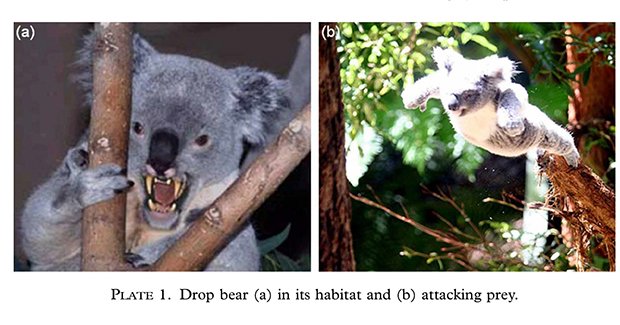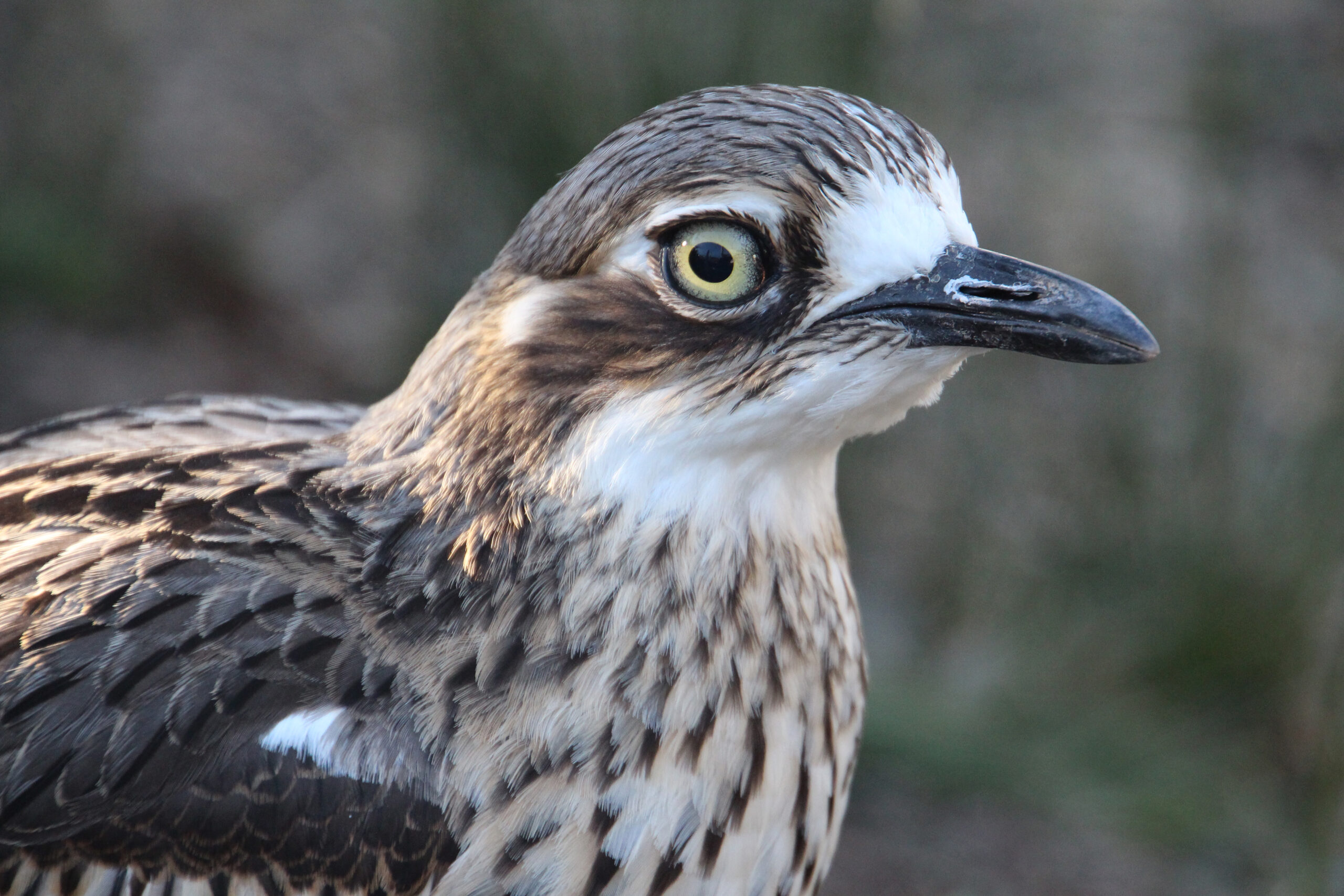| Common name | Drop bear |
| Scientific name | Thylarctos plummetus |
| Type | Mammal |
| Diet | Carnivorous |
| Average lifespan | Unknown |
| Size | 130cm long and weighing 120kg |
The drop bear is a native Australian marsupial related to the koala that is ferocious, savage, cunning and…. entirely fabricated.
The urban legend surrounding this predatory creature centres on the idea that this territorial animal ‘drops’ from the treetops on unsuspecting bush walkers and tourists. Interestingly, the drop bear is so elusive that no one has ever captured or photographed one, alive or dead.
A relative of the koala, the drop bear is much bigger than the standard phascolarctos cinereus and is more likely to be the size of a large dog or leopard. With course orange fur that has dark mottled patterning, the drop bear is equipped with sharp claws for climbing trees and holding onto prey. This frightening mythical creature has strong premolars and there are mixed reports of pointed fangs that protrude from the animal’s mouth.
Although there have been few verified sightings of the drop bear, they are thought to inhabit closed canopy forests and open woodland areas on the edge of dense forest.

Drop bear populations are thought to exist mainly in southern and eastern Australia, stretching as far north as the Cape York Peninsula, down to forested coastal regions of Tasmania. There have also been reported sightings of drop bears within south-east South Australia, the Mount Lofty Ranges and on Kangaroo Island.
Unlike its herbivore koala cousin, the drop bear is a true carnivore and is understood to feast on medium to large macropods including kangaroos and wallabies. The drop bear has a unique hunting style and will ambush its prey from the leafy tree canopy above. According to the urban legend, this creature will wait patiently for up to four hours in the hope of making a surprise kill.
Once the drop bear has its prey within striking distance, it will plunge as far as eight metres from the treetops and latch onto the neck of its victim. If the impact of the cascading drop bear isn’t enough to stun its unsuspecting victim, the piercing bite on the neck from the drop bear will subdue most prey. Smaller catches will be dragged back up into the tree, where the drop bear can then feed in peace.
Studies suggest people who are born in Australia are statistically less likely to be attacked by drop bears, leaving tourists and visiting nature enthusiasts more likely to be dropped on. It is thought that although humans are not specifically targeting by the drop bear, several bushwalkers who have wandered off the beaten track have suffered serious lacerations and bites after falling victim to drop bear attacks.
One method largely reported to deter the drop bear is the smearing of vegemite behind the ears, under the armpits or on the nose. Another suggested technique to keep this carnivorous animal at bay, is for bushwalkers to wear forks in their hair. There is little concrete evidence to suggest these repellents actually work, but it seems Australian visitors are willing to try almost anything to keep this mythical marsupial from unexpectantly dropping on top of them from the treetops.






